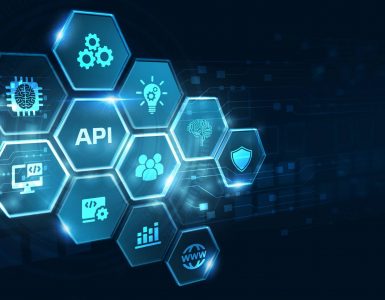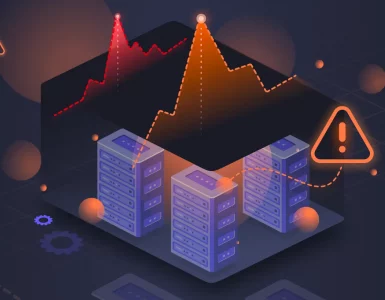Promoting cross-collaboration across the entire lifecycle is one of the biggest reasons why the popularity of DevOps continues to grow year on year. Continuous Integration (CI) pipelines have emerged as an important component of the DevOps methodology, enabling streamlined and efficient building, testing, integration, and delivery processes.
But (CI) pipelines are no longer considered the optimal approach for modern development practices in an increasing number of use cases.
In this article, the DevOps experts at Talent500 will help you understand the limitations of CI pipelines, introduce DevOps assembly lines, and differentiate between the two.
Let’s get started:
Quick Recap: Defining DevOps Assembly Lines and CI Pipelines
Let’s start with a quick overview of both because we need to brush off the basics before we get into complications and intricacies:
Continuous Integration (CI) pipelines are automated workflows that streamline the software development process. They specifically focus on the integration and testing phases of the SDLC. Let’s break it down further:
Components of a CI Pipeline:
- Version Control System (VCS)
- CI Server/Tool
- Build Tools
- Testing Tools
- Reporting & Feedback
To set the context more specifically, let me walk you through its core functions:
- It automates the integration of code changes from multiple developers into a central repository.
- Trigger automated builds and tests whenever new code is committed.
Its benefits include early issue detection, improved code quality, and faster releases.

(Credits)
DevOps assembly lines, on the other hand, are an evolution of CI pipelines. It is an automated workflow system that integrates and orchestrates the activities of various software development teams. This includes development, operations, security, and testing teams. Hence assembly lines encompass the entire software delivery lifecycle.
Compared to CI Pipelines, you can consider it as a pipeline of pipelines as it combines multiple, specialized pipelines (build, test, deploy) into a single, overarching workflow.
Think of it this way:
- A CI pipeline is like an individual workstation on a factory assembly line, performing a specific task.
- A DevOps assembly line is the entire factory, with interconnected workstations working together to build a product.
Well, most of you have figured out the tone I am setting- CI pipelines have been integral to DevOps for a long time but it is becoming a choking point for many teams.
Differentiating DevOps Assembly Lines and CI Pipelines at a Conceptual Level
On the surface, CI Pipelines and DevOps Assembly Lines may seem similar, but there’s a fundamental difference that sets them apart. CI Pipelines focus solely on automating the integration of code changes from multiple contributors into a shared codebase. Their goal? Early conflict detection and resolution for a smoother development process.
However, CI Pipelines have a narrow scope – they primarily cater to the needs of developers, failing to address the full spectrum of DevOps practices.
This is where DevOps Assembly Lines come into play. They take a much broader approach, extending well beyond just code integration. These streamlined workflows automate end-to-end processes across the entire software delivery lifecycle – from development and testing to deployment and monitoring.
DevOps Assembly Lines enable seamless collaboration between cross-functional teams by tightly coupling these critical stages into cohesive automated pipelines. This level of integration is what truly accelerates the delivery of high-quality software at scale.
In essence, DevOps Assembly Lines embody the core DevOps principles of breaking down silos and fostering cross-team collaboration through automation. Their comprehensive purview transcends the limited scope of traditional CI Pipelines.
| Parameter | CI Pipeline | DevOps Assembly Line |
| Focus | It primarily focuses on the development stage, specifically automating build, test, and integration tasks. It’s developer-centric | It takes a holistic view, automating and connecting activities across all software delivery teams (Dev, Ops, QA, Security, etc.). It promotes collaboration and shared ownership. |
| Scope | It has a narrower scope, limited to the development and integration phases within the software lifecycle. | It offers a broader scope, encompassing the entire software delivery lifecycle |
| Workflow | It functions as a single, isolated pipeline. | It acts as a “pipeline of pipelines“, integrating and orchestrating multiple, specialized pipelines for each team or stage |
| Objectives | It primarily aims to improve code quality by catching bugs and integration issues early in the development cycle. | It focuses on achieving continuous delivery by automating the entire software lifecycle, |
| Analogy | Think of it as a single workstation on a factory assembly line, performing a specific task on a car part like an engine | It is the entire factory, with interconnected workstations working together to build a product i.e. the car. |
Well, that sums up the conceptual part so let us understand the differences from a purely technical perspective:
| Parameter | DevOps Assembly Lines | CI Pipelines |
| Scope | End-to-end automation | Build, test, integration |
| Flexibility | High | Medium |
| Collaboration | Across teams | Primarily development |
| Scalability | Highly scalable | Limited |
| Compliance and Security | Easily integrated | Requires additional tools |
| Microservices Support | Excellent | Limited |
| Multi-Environment Support | Seamless | Requires manual configuration |
Now that you have an overview from both conceptual and technical POV, let us now focus on the fundamental differences that make assembly lines more attractive to an increasing number of DevOps engineers.
Efficiency in Automation
When it comes to efficiency, DevOps assembly lines have an upper hand in most cases since it automates multiple activities in parallel, surpassing CI pipelines’ sequential approach. They seamlessly connect pipelines which minimizes manual intervention whereas CI pipelines often require handoffs.
Scope of Integration and Deployment
Integrations are one of the core drivers of DevOps success and assembly lines offer broader integration capabilities when compared to CI pipelines. They are better suited to integrate more diverse toolchains and support both modern and legacy applications while unifying the entire DevOps lifecycle. On the other hand, CI pipelines primarily focus on code integration and lack the comprehensive integration scope of assembly lines, making them relatively regressive for the larger DevOps landscape.
Collaboration and Communication
It wouldn’t be an overstatement if I say that collaboration and communication are the backbone of DevOps and this is where assembly lines outperform CI pipelines by a far margin. DevOps assembly lines break down silos, provide real-time visibility and enable cross-functional teams to work together more efficiently. That’s what DevOps aims for as a culture and mindset while CI pipelines struggle with these aspects.
Benefits of Implementing DevOps Assembly Lines
Now that you have a clear understanding of the differences between the two, let us now learn about the advantages you can expect by implementing DevOps assembly lines:
Accelerated Feedback Loops
DevOps assembly lines provide immediate feedback at each stage of the pipeline. This enables teams to identify and address issues proactively, thereby fine tuning feedback looks in software development by a significant margin. CI pipelines often have longer feedback cycles as it is generally received after the entire pipeline is executed.
The faster feedback helps detect errors, bugs, and vulnerabilities early, saving time and resources. As a whole, it helps teams iterate quickly and make necessary adjustments to deliver high-quality software at a much faster rate.
Enhanced Collaboration
Since DevOps assembly lines provide a centralized platform for seamless collaboration, developers, operations, quality assurance, and security teams can work together with higher effectiveness. This is also due to the fact that assembly lines make it easier to share knowledge while communicating which isn’t the case with CI pipelines in most cases.
Isolation tends to be the reason behind less effective knowledge sharing since teams do not get enough opportunities to share artifacts, configurations, and best practices across the pipeline. Ultimately, stakeholders end up miscommunicating more often than communicating with each other. If you are witnessing such incidents on a more frequent basis, this makes an excellent case for implementing assembly lines.
Consistent and Reliable Deployments
Assembly lines automate the entire deployment process, from code integration to production deployment, thereby eliminating manual errors and ensuring consistent processes across environments. This makes consistency and reliable deployment natural outcomes of implementing assembly lines as only thoroughly validated code is deployed.
CI pipelines focus primarily on building and testing while leaving deployment processes more susceptible to inconsistencies. Hence DevOps teams that implement assembly lines face fewer production issues and are more confident in stability and quality of the software.
Scalability and Flexibility
With DevOps’ higher adoption rates, engineers are required to cater to an increasing complexity in software development needs. This includes accommodating microservices architectures and distributed systems and thus, assembly lines puts them in a better position to do so since they can scale to support multiple teams and projects simultaneously.
They also display a higher flexibility when it comes to tool integration and customization. With CI pipelines it is comparatively tougher to integrate your preferred tools which ultimately contributes to their scalability and flexibility limitations. Hence assembly lines prove to be a greater avenue for organizations that exhibit fast growth and changes which also validates its evolution:

(Credits)
Implementing DevOps Assembly Lines: A Step-by-Step Guide
To implement DevOps assembly lines, you’ll need a platform that supports defining workflows, integrating tools, and managing infrastructure. Solutions like JFrog, GitLab, and Shippable provide these capabilities. Once you have the essential tools in place, follow these steps:
- Define workflows connecting activities like CI, testing, and deployment.
- Integrate your DevOps tools into the assembly line.
- Configure runtime environments for each pipeline stage.
- Set up triggers to automatically progress workflows.
- Implement notifications for real-time pipeline visibility.
- Establish role-based access controls for security.
- Provision infrastructure automatically as part of workflows.
- Monitor and analyze metrics to optimize pipeline efficiency.
While the above steps make sense in most cases but as a rule of thumb, you must focus on automating the most time-consuming and error-prone tasks first. Also, you will need to spend time reviewing your implementation progress and look for bottlenecks and opportunities for improvement. With this approach, you will be able to refine your implementation in iterations without risking software delivery.
Best Practices for Transitioning from CI Pipelines
When transitioning from CI pipelines to DevOps assembly lines, keep these best practices in mind:
- Analyze your CI pipelines thoroughly. Identify bottlenecks, redundancies, and opportunities for automation.
- Design your assembly line to address CI pipeline shortcomings. Focus on creating a seamless, unified workflow that encompasses all DevOps stages.
- Select a platform that aligns with your assembly line vision. Evaluate tools based on integration capabilities, scalability, and ease of use.
- Adopt an incremental approach. Start by transforming your most critical or problematic pipeline. This targeted start ensures a controlled transition while delivering immediate value.
- Implement comprehensive testing at each stage. Automated tests should validate code, configurations, and deployments. Emphasizing on quality prevents defects from propagating downstream.
- Integrate security seamlessly into your assembly line. Automate vulnerability scanning, code analysis, and compliance checks.
- Establish meaningful metrics to gauge the success of your transition. Monitor cycle times, deployment frequency, and defect rates.
- Invest in training and support. Help teams understand the assembly line approach and maintain a culture of shared ownership across different functions.
Remember, you need to follow a phased approach to migrate CI pipelines to assembly lines like any other DevOps component. While these best practices are useful in a majority of cases, it is noteworthy that you must factor in the feedback you receive and keep iterating over the course of time.
You don’t necessarily need to introduce new tools and worsen your tool sprawl when implementing assembly lines since it is a concept for connecting your existing ones into a unified workflow.
Impact on Team and Software
Talking about the impact of assembly lines in DevOps, it isn’t incremental but monumental. Why so? In one line, they bring a fundamental shift in how teams operate and software is delivered. To better understand, let us break down the impact into more understandable chunks:
Empowered Cross-Functional Teams: One of the biggest outcomes for teams lies in the fact that their specific roles are diluted in favor of delivering value to the end user i.e. customer. This also translates to greater autonomy and alignment as collective code ownership becomes a reality. Ultimately, both the team and the individual stakeholders need to make a shift towards product-centric mindset for assembly lines to yield the above-discussed benefits.
Shift-Left Mindset: The shift-left mindset takes the front seat with assembly lines as it integrates quality and security into every stage of the software development and deployment. Thus the focus shifts on preventing issues rather than merely detecting them.
It also means that regulatory and security requirements are codified into the pipeline, ensuring that every code change is automatically validated against these standards. This proactive stance reduces rework, minimizes technical debt, and ensures that the software delivered meets the highest standards of quality and security.
Continuous Learning and Improvement: Since the collaboration and communication are benefited to a huge extent, teams also get a chance to share extensive data and insights that they can collectively leverage for continuous learning and improvement. In principle, this impact stems from the virtue of better end-to-end visibility of software development lifecycle.
Resilient and Adaptable Software: DevOps assembly lines enable teams to deliver software that is, in many ways, loosely coupled. This emphasis on modular architectures makes software more resilient, easier to maintain, and adaptable to change.
Continuous Value Delivery: Ultimately, the true impact of assembly lines is the ability to deliver value to users and the business continuously. It enables DevOps teams to release new features and improvements on a regular basis.
Wrap Up
Implementing DevOps assembly lines is not a one-time event- it requires recalibrating your approach towards the cultural shift to continuous improvement.
As a DevOps leader, you must encourage experimentation and innovation within your teams. And this will require you to foster a “blameless” culture that learns from failures. Instead you must create a system to continuously gather feedback from stakeholders and incorporate it into your assembly line.
Remember, the goal is not just to automate processes but to enable faster value delivery. This single maxim will help you make the most out of assembly lines.
Ready to rock at your next DevOps job using these insights?
Sign up on Talent500 and find the world’s top paying remote DevOps jobs now!






Add comment